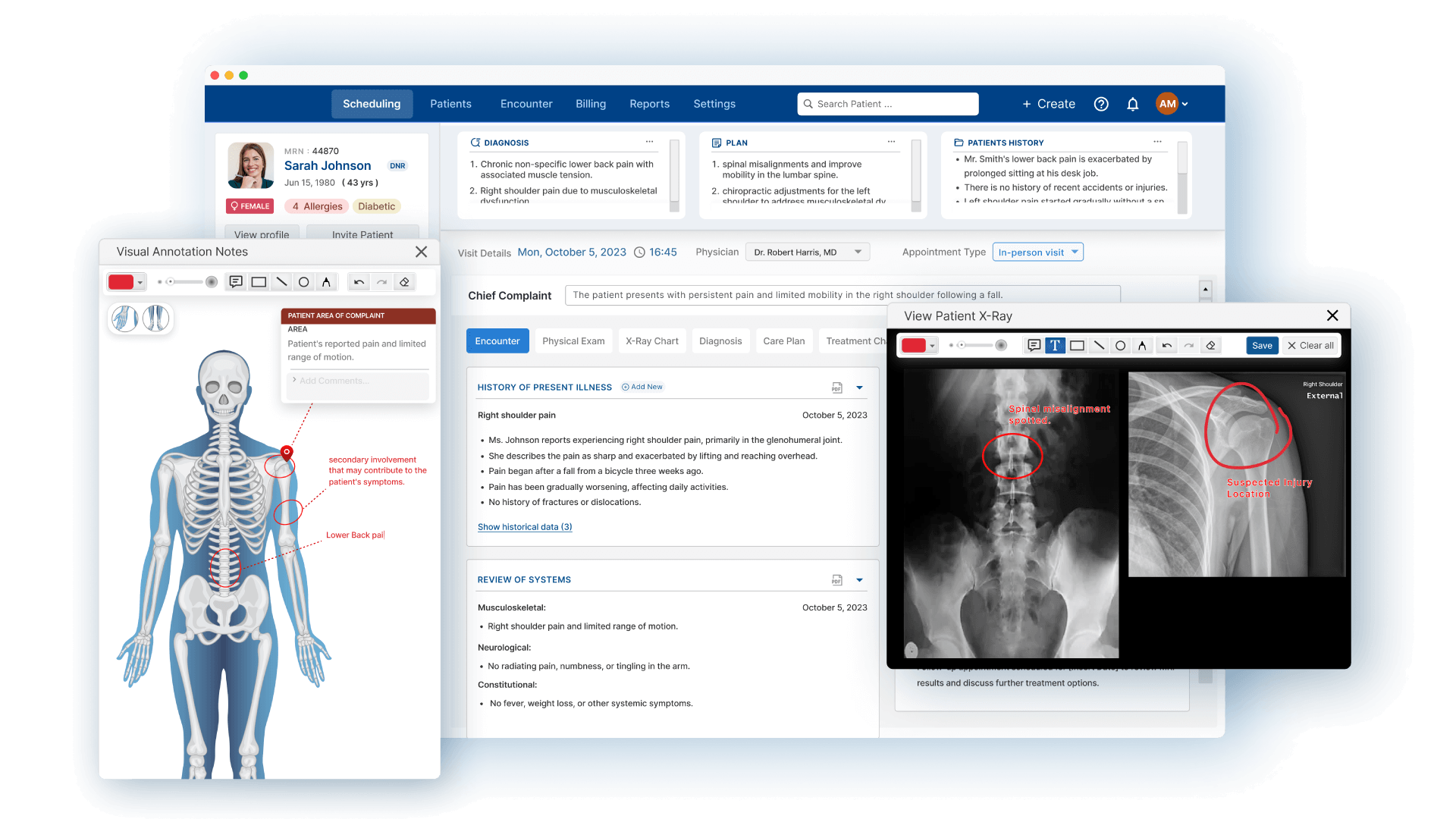Overview
The client is a distinguished US-based orthopedic care specialist organization with an extensive network of clinics spread across multiple locations. With 20 years of experience in the field, the client is committed to providing top-notch orthopedic care through a team of seasoned experts. The orthopedic Clinic operates with a significant patient intake of 200-400 patients weekly. The clinic boasts a comprehensive team of 30 physicians, 40 staff members, and ten administrators.
Business challenges
With a strong emphasis on continuous improvement and patient outcomes, the client seeks an Electronic Medical Records (EMR) system that prioritizes outcome tracking. The goal is to implement a solution that enables the systematic collection and analysis of patient data to assess the effectiveness of treatments and interventions. The client is looking for a comprehensive tracking system that facilitates evidence-based decision-making, quality improvement initiatives, and, ultimately, the delivery of orthopedic care.
Thinkitive Solution
Thinkitive's business analysts and subject matter experts started with the requirement analysis (Discovery) phase. The thinkitive team took multiple calls with the client and created detailed requirement documents and various use cases.
Based on the feature list, we have developed an orthopedic EMR software which includes outcome tracking and some additional features such as orthopedics-specific customizable templates, telehealth, and a patient portal.

Solution Highlights
-
a) Visual Representations
Outcome tracking software includes visual representations of patient progress over time, such as charts, and graphs. These visualizations help providers and patients understand changes in their health status.
-
b) Alerts and Notifications
The software includes alerts and notifications that notify providers of significant changes or trends in patient outcomes, allowing them to intervene in real-time.
-
c) Reporting and Analytics
Outcome tracking software typically includes reporting and analytics tools that enable healthcare practices to create customized patient outcome reports. These reports can be used for quality improvement initiatives and performance evaluation.
-
d) Decision Support
Based on outcome data, the software may provide decision support by recommending evidence-based treatments or interventions as per the patient's progress.
-
e) Patient Engagement
This feature allows patients to review their progress, access educational materials, and communicate with their healthcare team, enabling them to actively participate in their care.
1. Outcome Tracking
Outcome tracking is a process of monitoring and assessing patient health progress and treatment outcomes. It involves gathering and analyzing data over time about the patient’s condition, symptoms, and functional abilities. The outcome of the patient’s health treatment and progress can be tracked using the given features
2. Patient Portal
The patient portal helps patients schedule, reschedule, or cancel appointments as per their convenience.
- It helps in accessing educational material assigned and tracking health progress.
- Attending exercise sessions, and sharing medical information with different health care providers.
3. Telehealth
Remote consultation plays a very important role in providing quality treatment to the patient. Using this feature it is possible for orthopedists to virtually consult patients from any location using software in real time.
4. Orthopedics-specific Customizable Templates
These templates help orthopedists collect orthopedic-specific information only during encounters such as post-operative notes, chief complaints, medications, etc. As per the requirement, orthopedists can customize the templates. It saves time on documentation and increases the consultation time with patients.
Value Delivered
-
Healthcare providers had real-time data at their disposal to make informed decisions about patient care, resulting in better treatment plans.
-
As providers became more comfortable using the EMR for outcome tracking, the practice's workflows improved.
-
Through outcome-tracking discussions with providers, patients appreciated the transparency and involvement in their care.
-
The collected data was used by the practice to identify areas for quality improvement and to benchmark against industry standards.
